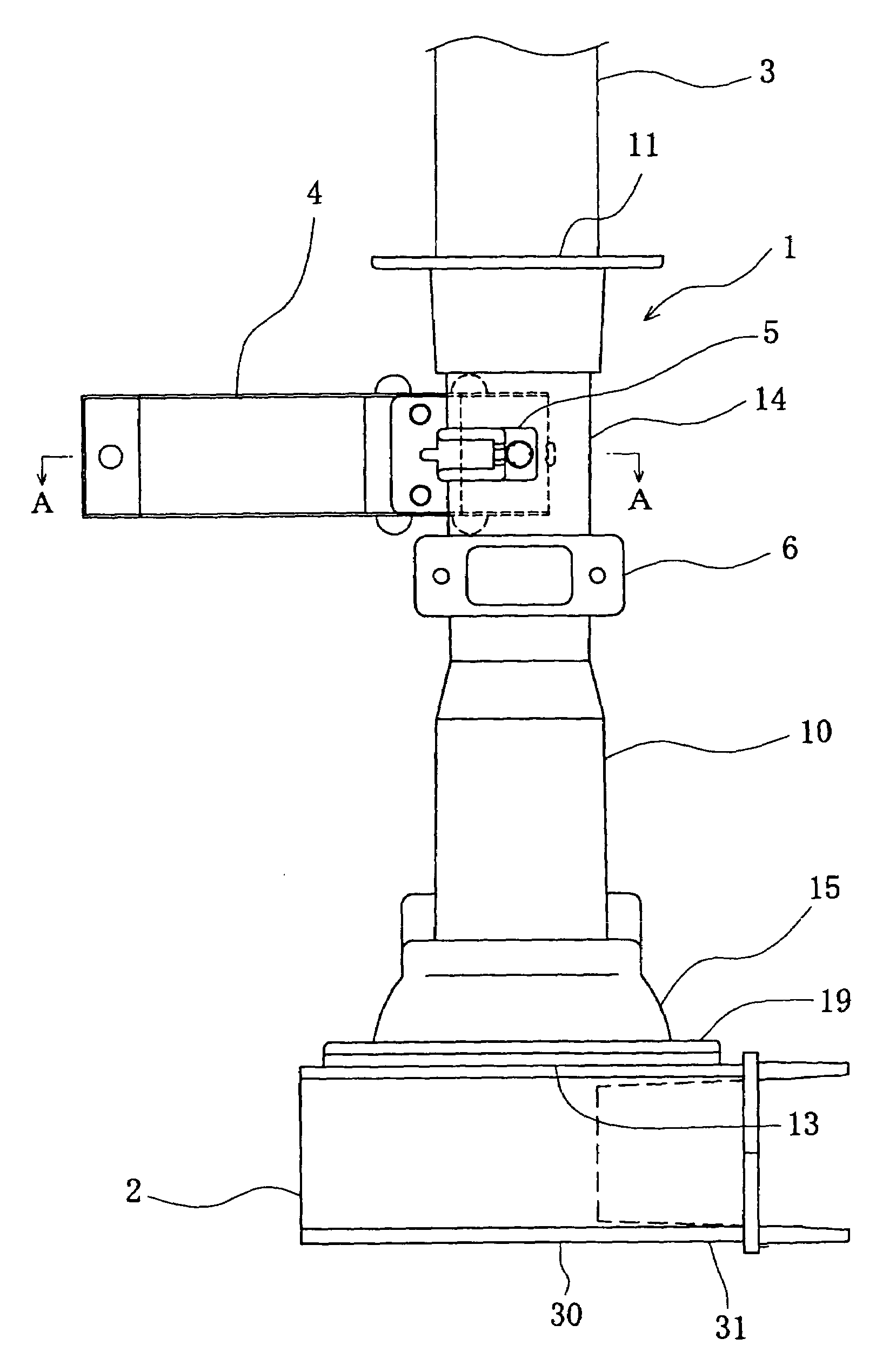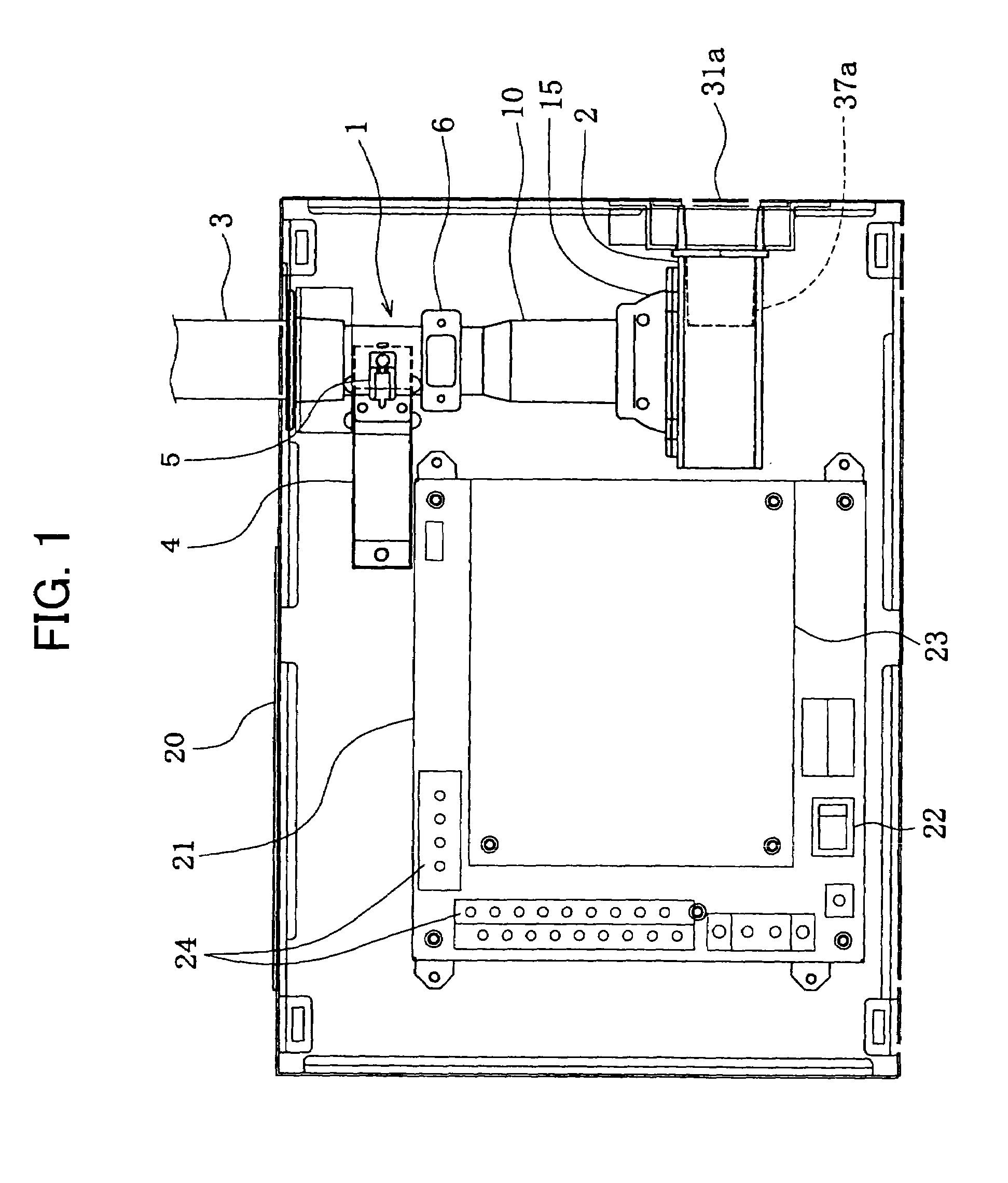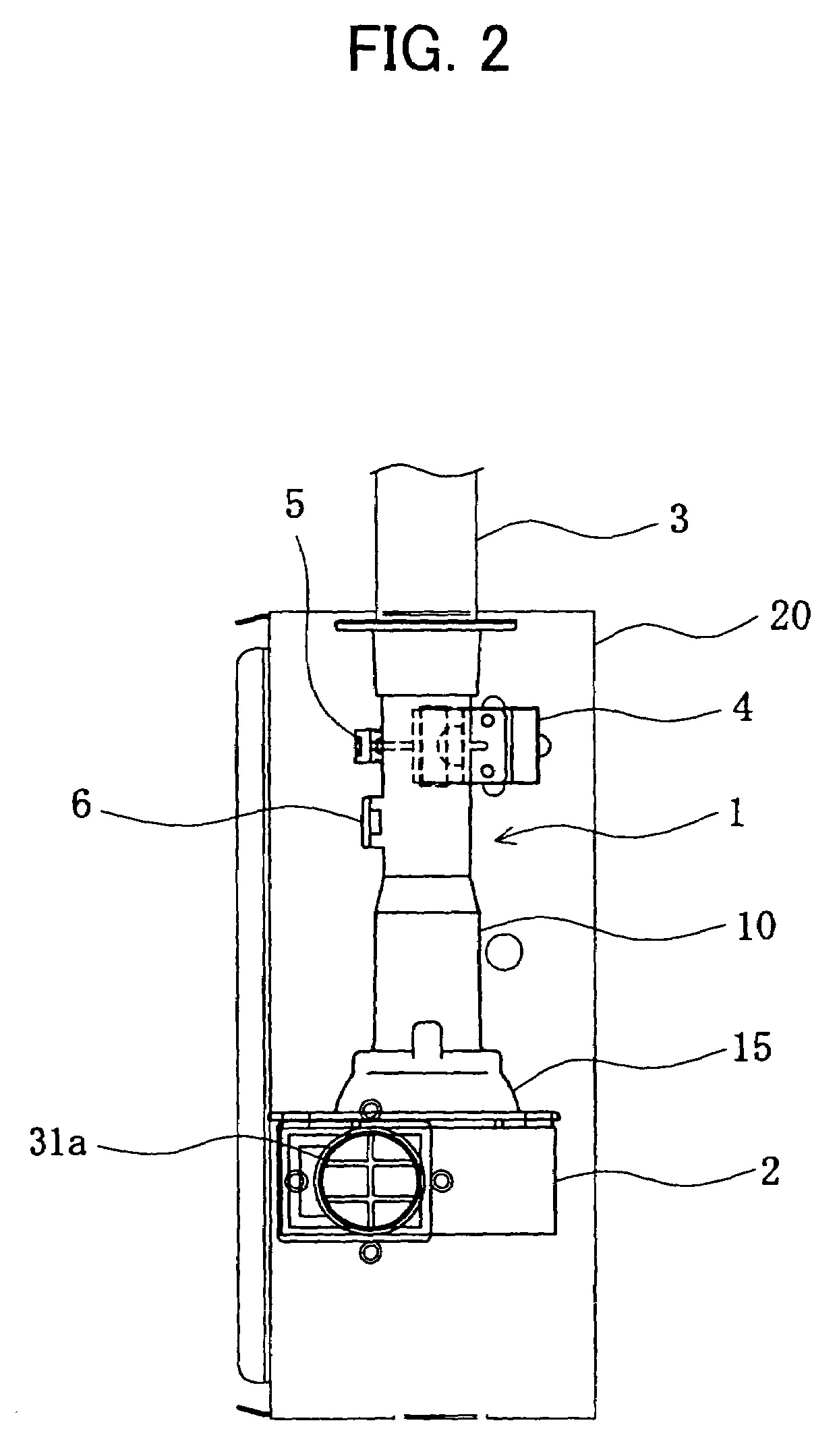Sampling tube-type smoke detector
a sampling tube and smoke detector technology, applied in fire alarms, specific gravity measurement, instruments, etc., can solve the problems of difficult miniaturization, difficult stabilization of target objectives, and specific limitations of sampling tube-type smoke detectors, and achieve the effect of suppressing airflow pressure loss
- Summary
- Abstract
- Description
- Claims
- Application Information
AI Technical Summary
Benefits of technology
Problems solved by technology
Method used
Image
Examples
Embodiment Construction
[0041]The present invention will hereinafter be described in detail with reference to the preferred embodiment shown in the accompanying drawings. FIG. 1 is a front elevation view showing the internal configuration of the detector main body in this embodiment. FIG. 2 is a right-hand side surface view of FIG. 1. FIG. 3 is a front elevation view of the smoke detection device in this embodiment. FIG. 4 is cross-sectional view of the lead-in tube which constitutes the smoke detection device and the inter-connection part.
[0042]The sampling tube-type smoke detector in this embodiment comprises a sampling tube 3 with suction openings 42 (see FIG. 7) formed in a monitored area. A smoke detection device 1 detects smoke particles contained in the air suctioned through the sampling tube 3. An aspirator 2 is formed in the downstream of the smoke detection device 1. The smoke detection device 1 and the aspirator 2 connect by way of an inter-connection part 15. Among those which constitute the sa...
PUM
| Property | Measurement | Unit |
|---|---|---|
| angle | aaaaa | aaaaa |
| diameter | aaaaa | aaaaa |
| diameter | aaaaa | aaaaa |
Abstract
Description
Claims
Application Information
 Login to View More
Login to View More - R&D
- Intellectual Property
- Life Sciences
- Materials
- Tech Scout
- Unparalleled Data Quality
- Higher Quality Content
- 60% Fewer Hallucinations
Browse by: Latest US Patents, China's latest patents, Technical Efficacy Thesaurus, Application Domain, Technology Topic, Popular Technical Reports.
© 2025 PatSnap. All rights reserved.Legal|Privacy policy|Modern Slavery Act Transparency Statement|Sitemap|About US| Contact US: help@patsnap.com



